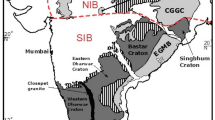Abstract.
East Maui Volcano is the younger and larger of two volcanoes that form the island of Maui, Hawai‘i. Rejuvenated stage (Hāna volcanics) lava flows along the southwest rift zone form a veneer lying disconformably on top of the postshield Kula Volcanics (0.93–~0.36 Ma). Most of the 59 documented Hāna eruptions produced ‘a‘ā flows from large cinder cones. Fourteen new 14C ages and stratigraphic relationships suggest that the onset of rejuvenated volcanism on the southwest rift zone began at least 50 ka, showing that the quiescent period between the postshield and rejuvenated stage on East Maui was ~300,000 years long, the shortest yet documented on any Hawaiian volcano. Eruption frequency on the southwest rift zone steadily increased during the past ~4800 years; there have been at least six eruptions within the past ~960 years. Hāna volcanic activity on the southwest rift zone during the past ~4800 years may have occurred in three episodes, each lasting as long as 1000 years separated by quiescent periods ~500–800 years long. Geochemical data, ages, and geologic relations provide evidence for five multi-flow sequences that were erupted during single events, helping to define the eruptive character or style of rejuvenation stage volcanic activity on the southwest rift zone. Areas covered by the products of individual eruptions vary from 0.14 to ~40 km2, and volumes from 0.0003 to 0.40 km3. Geochemical evidence shows that the Hāna lavas are derived from a small range of parental melts that undergo varying degrees of fractional crystallization. MELTS crystallization simulations suggest that Hāna magmatic evolution occurs at a pressure of ~3 kbar (~10–11 km depth), just above the interface between the volcanic edifice and the oceanic plate. The Hāna volcanics are unique among Hawaiian rejuvenation suites in having been erupted along rift zones with a relatively high eruption frequency from a quasi-steady-state, deep crustal magma reservoir.
Similar content being viewed by others
Author information
Authors and Affiliations
Additional information
Electronic Publication
Rights and permissions
About this article
Cite this article
Bergmanis, E., Sinton, J. & Trusdell, F. Rejuvenated volcanism along the southwest rift zone, East Maui, Hawai‘i. Bull Volcanol 62, 239–255 (2000). https://doi.org/10.1007/s004450000091
Received:
Accepted:
Issue Date:
DOI: https://doi.org/10.1007/s004450000091




